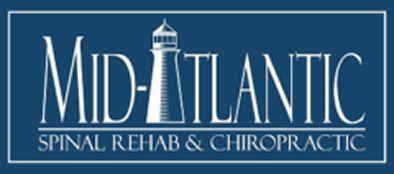SCIWORA – A Scary Finding in Minors Involved in Baltimore Auto Accidents
As a Baltimore chiropractor whose clinic spends the majority of its time treating individuals involved in Baltimore auto accidents, we come across many types of injuries as a result of these Baltimore car accidents. We traditionally see patients with headaches, neck pain, and back pain. Occasionally we see cuts, scrapes, bruises, and concussion as well. As specialists in treating this Baltimore auto accident injuries we get really good at picking up on subtle injuries that often go unnoticed by other providers.
One since type of injury that can be difficult to diagnose is called a SCIWORA injury. The acronym stands for Spinal Cord Injury WithOut Radiographic Abnormality. This is a special term for injuries that occur to minors below age eight that involves transient injury to the spinal cord without any radiographic (x-ray) proof of its occurrence.
It may not be a surprise to many that there are thousands of children injured in motor vehicle collisions (in Baltimore and elsewhere) every year and that motor vehicle collisions are the number one cause of infant mortality for children between 5-19 in the United States.
Following a Baltimore auto accident injury it is normal for a parent to take their child to a local Baltimore emergency room or a Baltimore urgent care location for evaluation. At these evaluations which are largely overbooked and under-staffed it is not unusual for these patients to have a physical exam but to not have any x-rays taken. As these rooms get more and more crowded we are starting to see a shift of parents taking their children directly to Chiropractors and Physical Therapists for initial evaluation and treatment. Typically these evaluations will include x-ray (radiographic) analysis to rule out fracture, dislocation, or more importantly ligamentous instability that could indicate trouble for their child.
As with all patients, a proper history and physical examination is required in order to make an appropriate diagnosis. This can be especially challenging in children since many times their verbal skills may not be up to par with that of their parents. As you can imagine, it is also hard for parents to describe pain and symptoms that children are feeling. Additionally, it is not unusual for children to avoid telling to the truth to a “stranger” during an exam and to generally go into “avoidance mode” and withhold key answers during an evaluation. To further complicate matters, typically SCIWORA injuries do not manifest until about 3-4 days following a Baltimore auto accident injury.
So then how do we determine if a SCIWORA is present? The key is to make the patient (child) feel comfortable enough to open up to you so that they can describe the pain they are feeling. It is understandable that this may take several visits before they feel comfortable with a provider to tell them everything.
Providers need to evaluate for a TFNE (transient focal neurological episode) that may have taken place during or shortly after the crash. These symptoms may include, but are not limited to, ataxia, unilateral anosmia, tinnitus, memory problems, nystagmus, impairment of tactile sensation, positive cranial nerve examination, hypoesthesia, and muscle weakness. It can be challenging for a minor or their parents to describe these symptoms to a provider. Even still, these symptoms may last minutes or hours depending on the severity.
If these symptoms are present on history, then motion x-rays of the affected region (typically neck or lower back) are indicated. This involves taking x-rays of the patient in extremes of motion both in flexion (bringing the chin to the chest, or bending forward) and extension (bringing the neck all the way back or hyperextending the lower back and looking to the ceiling). This can be used to look for any bony slippage, which could indicate ligamentous instability. If there is suspected ligamentous instability, then referral for MRI or CT scan is appropriate. Provided the presence of a SCIWORA is indicated on advanced imaging, then referral to a neurologist or pediatric neurologist is indicated to help monitor and evaluate the condition.
Many patients and children are able to walk away from Baltimore auto accident injuries without injury while others are not so lucky. Even when things seem ok, it is always worthwhile to get a medical evaluation to determine if there are any latent underlying pathologies that may have otherwise gone unnoticed. We see many children in this office following Baltimore auto accident injuries. Fortunately, I have only ever seen one with a SCIWORA injury in my approximately 8 years of licensed practice.
If you, or someone you know, has been injured in a motor vehicle collision and require an evaluation and treatment, please contact Mid-Atlantic Spinal Rehab & Chiropractic at (443) 842-5500. We would be happy to help!
Dr. Gulitz
